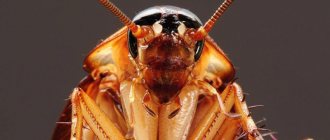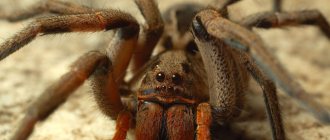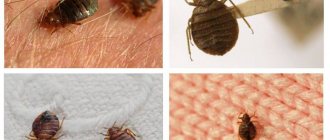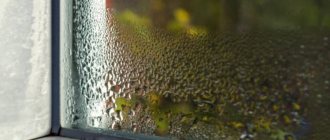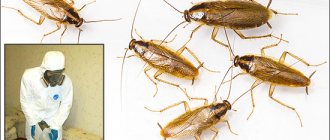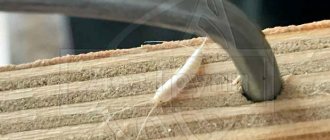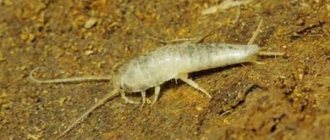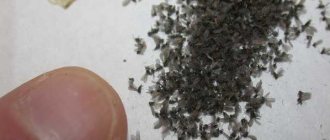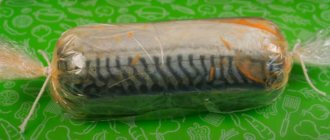Habitat
In nature
Where do woodlice live in their natural environment? In nature, they can live wherever conditions are favorable - there is moisture and there is a large amount of food. Woodlice feed on semi-decomposed organic matter, root crops, vegetables, eat tender leaves of plants, and can eat spoiled cereals and rotten fruits.
In a garden or vegetable garden, they can be found under stones, in secluded damp corners of the garden - near a pond, not far from a well, next to a rain ditch or sewer.
In the wild, small crustaceans choose as their habitat areas near a river or lake , slightly swampy places, natural depressions in stones and soil where moisture accumulates.
In the apartment
Why do these small pests appear in the apartment, especially in the bathroom? To breathe, woodlice need very moist air, so they settle in apartments where the conditions for their life and reproduction are favorable - in bathrooms, kitchens under the sink, air ducts where rainwater penetrates and accumulates.
Why do they start?
Why do woodlice, which are often mistakenly considered insects, choose a city apartment as their habitat, why are there many of them in attics and basements, what are the reasons for their appearance in a country house?
In the apartment
Let's look at where woodlice come from in a city apartment. In apartments, small pests most often appear from common areas where sanitation standards are not observed. These are mainly basements of apartment buildings or attics.
In basements, woodlice can live for a very long time and reproduce successfully, since it is damp and contains organic matter for nutrition:
- mold spores;
- mushrooms;
- grass roots;
- rotting vegetables.
In leaky attics, crustaceans can feed on leftover grain from pigeon droppings and rotting wooden floors.
From these habitats, woodlice can move through air ducts or through cracks to the first and last floors where residential apartments are located, and if they find favorable conditions there, they remain to live and reproduce.
Read about why there are woodlice in the bathroom or toilet and how to get rid of them, and find out what woodlice eat in the bathroom, apartment and other rooms here.
In a private house
Pests can be brought into private country houses from the garden , along with vegetables and herbs. But often small crustaceans themselves make their way into damp basements, attracted by the food reserves stored there.
A damp, poorly ventilated basement or leaking attic, rotting wooden structures of the house, never-drying ditches near a summer cottage, and damp sewers are ideal conditions for the survival of woodlice.
Reference .
You can bring crustaceans into your home with purchased vegetables or herbs, but in the absence of favorable conditions in your apartment or dacha, they will not take root.
The most common types of woodlice
The species diversity of woodlice is quite large. There are even giant marine species, the body length of which reaches 30-50 cm. On the territory of Russia you can find the three most common species.
Common armadillo
A small species up to 1 cm long. In case of danger, armadillos are able to curl up into a ball. Thus, their body is completely hidden under a durable shell. The armadillo most often lives in cellars and basements.
Rough woodlice
Unlike the armadillo, she cannot curl up into a ring, but she runs very fast. Rough woodlice is very common in residential buildings and apartments, and causes damage to indoor plants and food products.
Woodlouse Rathke
Representatives of this species live in large numbers in Europe and Russia. Their habitats are most often located in dense urban areas. The body of woodlice of this species is more narrowed and flattened, and the shell is light in color.
In large numbers, woodlice will cause discomfort and harm to indoor flowers. They must be dealt with using accessible methods!
How to determine where they breed?
First of all, you need to understand that these creatures breed where there is maximum humidity. Therefore, you should look for their habitat in precisely such places - in the bathroom, under the floor in the kitchen near the sink. If possible, you need to inspect the attic and basement .
In country houses, be sure to go down to the basement and look for nests of pests in dark corners, turn over stones and bricks, check the water supply and sewerage for leaks.
It is the infestation of woodlice that often leads to residents discovering a leaking roof or a leaking water supply.
The presence of woodlice in public areas is an alarming signal. The pests themselves can serve as carriers of diseases , but their presence also indicates high dampness in the premises, and this causes the appearance of mold and mildew, which is already very dangerous for the health of residents of the apartment complex. Having discovered woodlice, you should immediately call the housing office and call the sanitary control service to check basements and attics.
If the house has pantries or closets where vegetables are stored, they should also be inspected, lifting sequentially the containers where the supplies are poured.
Chemical control methods
These insects can be poisoned using any type of dichlorvos. Of course, you will have to leave the room for several hours and thoroughly ventilate it after treatment, but the result is worth it. Woodlice die completely in just 2-4 hours. Fumigators and other chemicals will also be effective.
To get rid of woodlice thoroughly, you can use the services of special services that deal with the destruction of insects. Service employees today use gentle drugs that are safe for people and pets, but merciless against insects.
In the process of exterminating woodlice, cold or hot fog technology and specialized compounds are used.
What are the first signs of entering a home?
Small crustaceans are nocturnal creatures, so their presence in the house can be detected quite late (a description and classification of woodlice can be found in this material). Signs may include:
- spoiled vegetables;
- traces of feces near the trash can and in the kitchen sink area;
- traces of vital activity in cereals or greens.
Also an indirect sign can be dying house plants - wood lice often settle in pots of soil, feeding on the roots and leaves of the flower.
If these moments exist, you need to make sure that these are woodlice. To directly detect crustaceans, you need to examine the dark corners of the bathroom, basement or attic of a residential building at night, illuminating with a flashlight all the corners, crevices and possible cracks in the walls, in basements - lifting objects lying on the ground. It is under bricks, overturned buckets and stacked boards that these pests like to nest.
Saving plants
Woodlice can attack some types of indoor plants. First of all, these are orchids. If rescue measures are not applied, the flower will die in two weeks. The same goes for ferns.
What signs can be used to identify wood lice infestation? The soil in the pot will begin to compact for no apparent reason. Loosen it with a tool and if you see white worms, then that’s it, the flower is infected with woodlice.
It is necessary to loosen the soil of orchids and ferns, otherwise the roots will not receive the required amount of oxygen and will die. Woodlice make the soil dense. Therefore, it is important to take action. To do this, carefully remove the flower from the pot, shake the roots off the ground and wash them in a weak solution of potassium permanganate. After the plant needs to be planted in new soil. It is best to throw away the used pot, as it can attract woodlice.
How to get rid of it?
There are many ways to get rid of uninvited guests - from homemade to store-bought. The means you can use are the same as for cockroaches :
- crayons;
- traps;
- poisonous baits.
If there are too many wood lice in the attic or basement, you should call special services that destroy insects.
But all extermination measures will be useless if unbearable conditions are not created for the pests .
Therefore, first of all it is necessary:
- dry the bathroom by installing an additional heater;
- seal cracks in the floor and walls, from where new batches of crustaceans can crawl;
- throw out the trash can on time, without leaving waste overnight;
- check all pipes and taps for damage;
- wipe the floor in the apartment dry, temporarily do not dry clothes in the kitchen and bathroom;
- in a country house, thoroughly ventilate the basement and repair the roof, preventing leaks.
If pests have settled in flower pots, change all the soil, washing the roots of domestic flowers with running water before replanting. This way there will be no crustacean eggs left on them and they will not be able to reproduce again.
Only if these conditions are met will it be possible to get rid of wood lice forever.
There are different types of woodlice and therefore we have prepared materials about the types of this pest, including the white woodlice.
Peculiarities of woodlice reproduction
Woodlice and offspring.
Reproduction in these small crustaceans occurs in a very interesting way. First, copulation occurs and the female's testes are filled with seed. After some time, the female molts, and her body transforms slightly.
After such a restructuring of the body, one part of the seed fertilizes the eggs, while the other continues to be stored in the testes. When the first fertilized eggs are carried and hatched, the remaining seed fertilizes a new batch. It turns out that one copulation allows you to get two broods of small woodlice.
Prevention of occurrence
The most important thing to do to prevent pests from appearing is to keep the house clean and dry .
- Avoid leaks or eliminate them in a timely manner, prevent vegetables and fruits from rotting in places where they are stored, regularly ventilate/dry the bathroom, take out the trash in the evening.
- In country houses, it makes sense to dry the basement well in the summer, creating a draft, and regularly check the roof and repair it in a timely manner.
- In summer cottages, you should not store large amounts of organic waste close to the house; it is better to move the compost heap, where wood lice love to nest, to the far corner of the garden.
Thus, woodlice are extremely unpleasant pests that can not only frighten with their appearance, but also cause a lot of harm - spoil supplies, undermine the wooden structures of houses, and transmit diseases. To destroy them and prevent their occurrence, the main condition must be observed - dry air. Without sufficient moisture, woodlice will not be able to breathe and will either die or leave the home forever.
If you find an error, please select a piece of text and press Ctrl+Enter.
